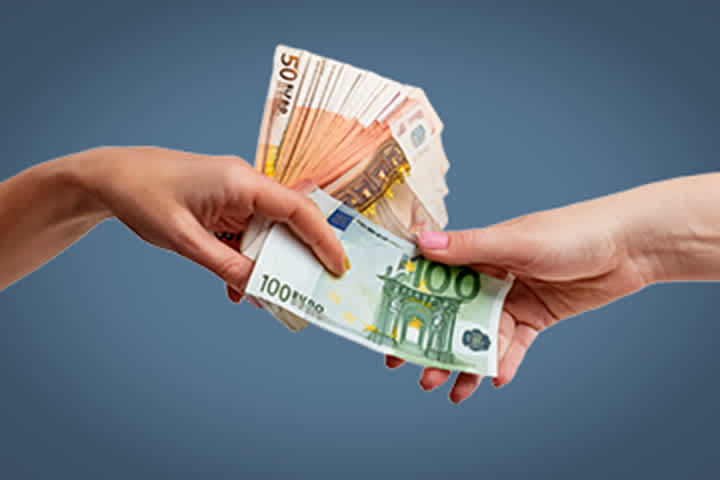The advantages and disadvantages of contactless payment
Keytrade Bank
keytradebank.be
October 30, 2023
3 minutes to read
Contactless payment has significantly increased in popularity in recent years, and rightly so. Simply tap your bank card, smartphone or smartwatch on the payment terminal to complete your purchase. However, the popularity of contactless payments has also raised some questions. Are they as secure as the more conventional way of paying with a bank card? If I lose my card or it is stolen, can someone else use it to make payments? Can I set a limit? We give the answers to the most frequently asked questions below.
What is contactless payment?
For years, we used to make payments by inserting our bank card into a payment terminal's slot and entering our PIN. Contactless payment has made this unnecessary. All you need to do is place your card, smartphone or other payment device on the terminal. The rest happens automatically. There's no need to enter your PIN. Your bank card contains an NFC chip. NFC stands for near-field communication, a technology that uses radio waves. Your bank card is not the only item to have such a chip. You can also find it in many other devices, such as smartphones, smartwatches, car keys, festival wristbands, and train or bus passes. The chip connects wirelessly to the terminal (which has the same type of chip) and performs the desired action, in this case a payment.
You simply hold your bank card or smartphone up to the payment terminal to make a contactless payment. You no longer have to insert your card into the terminal slot or enter a PIN. Payments are contactless up to 50 euros. For higher amounts, you need to enter your PIN.
Contactless payment by smartphone
All you need to make a contactless payment is a chip with NFC technology. You can find this kind of chip on your bank card, but also in some smartphones, smartwatches, wristbands and cards.
Is contactless payment secure?
Simply tap and go. That's how easy it is. For you – and therefore also for thieves. Many people have expressed this concern. Can thieves intercept the wireless connection and steal money that way? In theory, it is possible for a thief to hide a payment terminal in a backpack or newspaper and get as close as possible to your card or smartphone. In practice, there have been no reports of any such thefts according to the Febelfin banking federation. This is hardly surprising, as the efforts a thief would have to go to are not proportionate to what there is to gain. This changes if you lose your card or have it stolen, as this gives thieves free rein.
Set contactless payment limit
Contactless payment doesn't require you to enter a PIN. This means thieves could make one purchase after the other with your card and is why contactless payment is subject to a certain limit. You can pay small amounts of up to EUR 50 without a PIN. You can make up to five consecutive contactless payments, for a maximum of 150 euros in total. Once you reach this limit, you have to enter your PIN and the counter returns to zero.
Other security measures
- A payment terminal must be linked to an account number and therefore an identity. This ensures that the thief's identity is quickly revealed.
- NFC technology makes it difficult for fraudsters to copy a bank card. The chip in the card generates unique and encrypted data with every payment, which makes counterfeiting particularly difficult. If a fraudster counterfeits your card and attempts to make a transaction with the same number, the transaction will be refused.
- Payment cards never store information about your address or contact details.
- In case of fraud or if you card was lost or stolen, Call CARD STOP (available 24/7) on +32 (0)78 / 170 170. Do not forget to tell them that you have a Keytrade Bank card. You can also call our contact center.
Can I deactivate the contactless payment functionality?
Yes, you can easily deactivate the functionality at Keytrade Bank. You can do this online, in your mobile banking app, or by calling our customer service department on +32 2 679 90 00.


